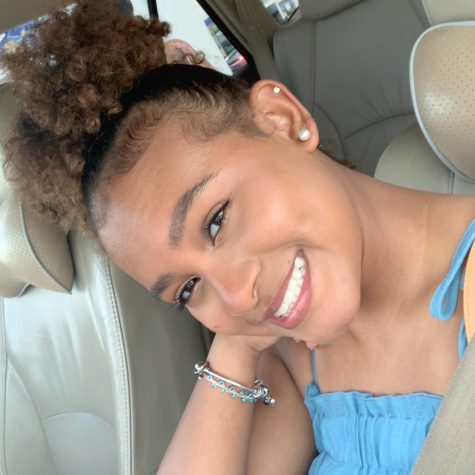The monster within Monster
Erupting in 2002, Monster Energy continues to dwarf most energy drink companies today. Though heavily endorsed as a helpful alternative to coffee, the Monster Energy Corporation fails to acknowledge the problems its consumers continue to face, like stroke, body aches and fatal effects. Recently, Monster increased its efforts to advertise to teens and children to better appeal to them, particularly with the ‘healthiness’ of the newer ‘zero ultra’ product released by Monster, which supposedly does not contain any sugars or calories. Energy drinkers should not continue to drink Monster as a substitute for coffee, especially considering drinking Monster exceeds the risks of drinking regular coffee.
October 12, 2022
The famous caffeine-fueled energy drink Monster was introduced in 2002 when Hansen’s Beverage Company, initially known for their juice-flavored sodas, debuted their new product: Monster Energy. Since then, Monster continues to expand its corporation, offering over 89 flavors. However, this multi-billion dollar industry fails to address the problems its consumers continue to face. From the fatal side effects, deceptive advertisements and improper precedents it sets for energy drinks, Monster continues to represent a self-fulfilling prophecy. The consumers of their energy drinks grow younger and younger, impeding teenagers nationwide.
The Monster corporation portrays the brand as cool and trendy by associating itself with famous musicians, extreme athletes and gamers; they appeal to teens and children. The public tends to overlook the product due to marketing efforts made by Monster. Monster Energy headlined an upcoming artist named Dani Leigh on their Monster Energy Outbreak Tour in 2020. Before their tour partnership, Leigh never associated with Monster; by using Leigh as the advertising headliner, Monster Energy Drinks appealed to her listeners, consisting primarily of young women and girls. Since adolescent boys make up the majority of Monster’s customers, the corporation leans on the sponsorships of MMA fights, dirt bike competitions, and NASCAR races for a new opportunity to reach a teenage customer base.
“I’ve been drinking Monster for 2-3 years, and it started when I used to play softball. One of my teammates suggested Monster to me because I was tired before tournaments. I used to drink coffee twice daily, and now I only drink a Monster once to wake me up. I probably wouldn’t recommend it to anyone because now I’m dependent on it,” senior Autumn Harris said.
Most Young teens and children consuming Monster do not know these drinks contain tremendous amounts of caffeine that cause increased heart rates and blood pressure, experts claim. A report by the Food Safety and Standards Authority of India (FSSAI) concluded that Monster Energy Drinks contained higher levels of caffeine than advertised. The Monster corporation deceives its consumers by not disclosing all of the drink’s contents or including a proper warning about the products to customers. In February of 2016, Morgan Morgan Law Company filed five lawsuits against the lawmakers of Monster Energy Drink. Attorneys claimed that ingesting the beverage causes heart attack, kidney stroke, and, in rare cases, death. The plaintiff, who suffered a stroke and initiated the case, disclosed that drinking approximately six Monster drinks a day for five years caused his injury. The lawsuit contends the effects of drinking Monster Energy can cause increased significant damage as opposed to what the brand says.
Monster Energy Drinks contain two main ingredients: caffeine, and ginseng. Caffeine works as a stimulant to the central nervous system, whereas ginseng works as a calming effect to restore your wellness. The two ingredients cancel each other out. Two 16-ounce cans of Monster a day contain what experts consider a lethal dose of caffeine. The company hiding this information from consumers does not allow them to make a knowledgeable choice when deciding to buy the drink.

“I found that Monster was the perfect drink to help keep me awake throughout the day. Even though it is a lot of caffeine, it doesn’t feel overwhelming like other energy drinks, and I turn to Monster whenever I need that extra boost to keep me awake during school days or practice. They’ve saved me after multiple all-nighters and long practices,” senior Emilie Ellis said.
Drinking Monster will supply you with short-term benefits keeping you energized during a late-night study session or helping to push your limits in a game. The drink even contains the amino acid taurine, which helps your body digest fats, however, the risks of drinking Monster as an energy source can result in long-term adverse effects. Instead of turning to Monster as an energy source, eating protein, sleeping, drinking water and exercising regularly provide a natural and healthier alternative.
“I try to avoid drinking Monster now, and I stopped drinking it two years ago because of the toll it was taking on me and how my heart would beat fast from drinking it. I would drink three to four a day, get sleep-deprived and always drink a monster to boost my energy. But I would see myself exhausted and dependent on it. The drink would give me that rush only for a while, and then I’d go back to drinking another after the rush died. I feel more energized and athletic now that I’ve stopped drinking it,” junior Verena Guerguis said.
Monster Energy fails to set a proper standard for energy drinks. Consumers deserve to know the exact ingredients of what they put into their bodies, and energy drink corporations like Monster should hold responsibility for not disclosing the information.




